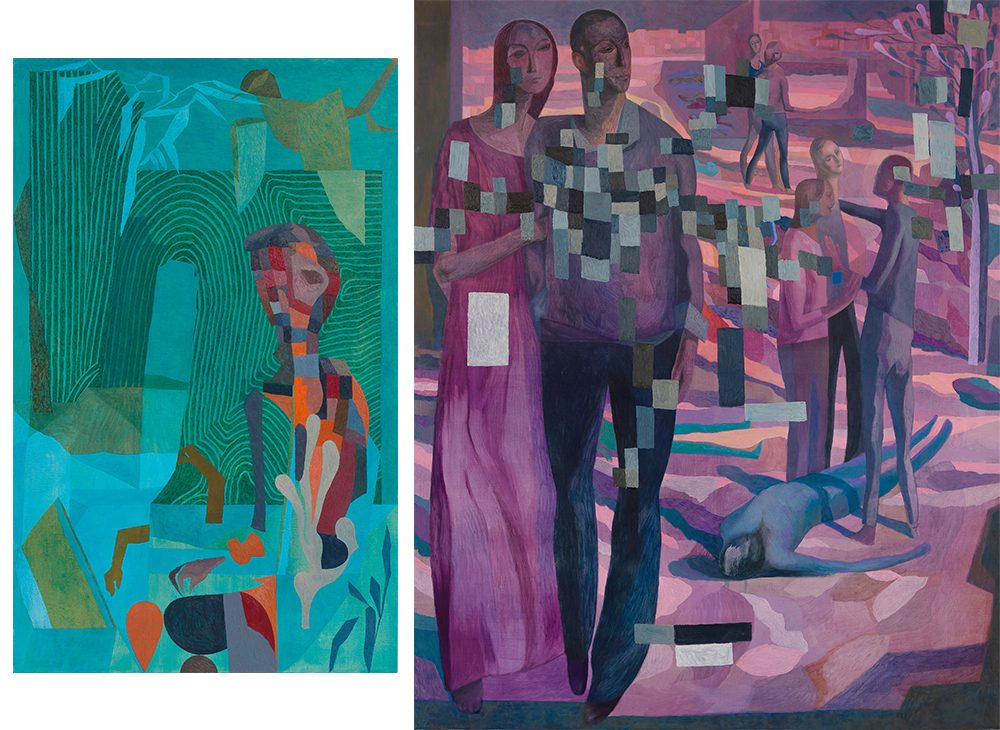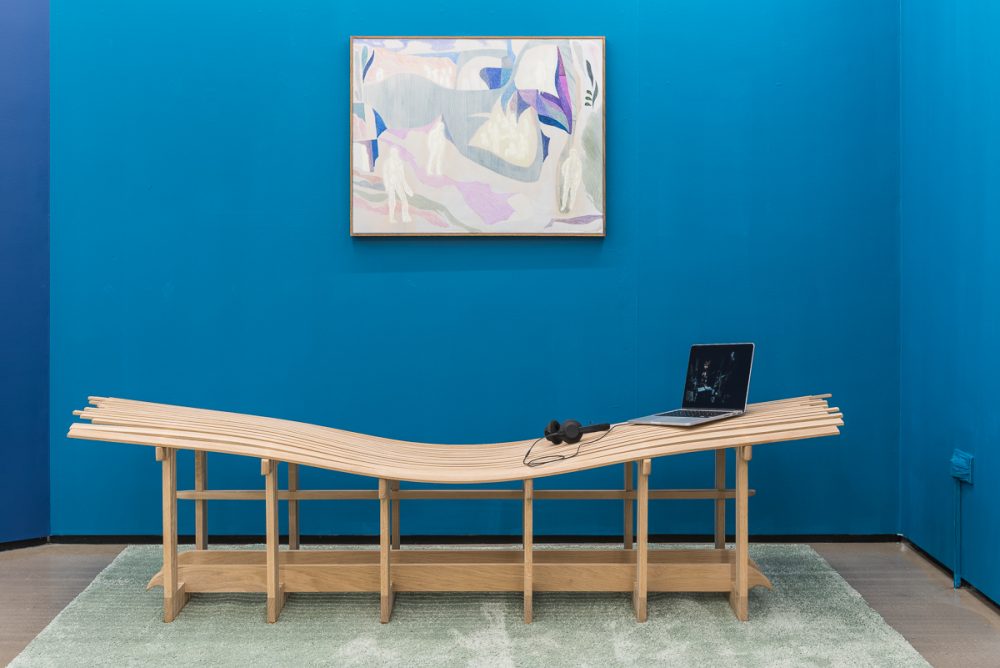 In his first solo UK showcase at Beers Gallery entitled Silent Conditions, Sverre Bjertnaes placed emotion and imagination at the centre of his work. The exhibition space – which combined sculpture, painting, furniture and video – enveloped viewers in a realm of expressive colour and unexpected juxtapositions, fluctuating between the abstract and the figurative. Conjuring up a dream-like aesthetic, Bjertnaes’ show offered an escape from mundane reality, creating a space in which viewers were encouraged to mediate on their own sensory response.
In his first solo UK showcase at Beers Gallery entitled Silent Conditions, Sverre Bjertnaes placed emotion and imagination at the centre of his work. The exhibition space – which combined sculpture, painting, furniture and video – enveloped viewers in a realm of expressive colour and unexpected juxtapositions, fluctuating between the abstract and the figurative. Conjuring up a dream-like aesthetic, Bjertnaes’ show offered an escape from mundane reality, creating a space in which viewers were encouraged to mediate on their own sensory response.
“Growing up in Norway, I was part of a classical movement in my youth, which was very much on the outside of the established art scene”, says Bjertnaes of his artistic beginnings. He claims that fellow Norwegian artist Bjarne Melgaard (widely considered to be one of the most important living artists in Norway) helped liberate him from a restrictive approach to creation. Melgaard shone a light on Bjertnaes when he was still “an outsider”, organising his first solo show at his artist-run gallery, the Norwegian Anarchistic Fraction. Bjertnaes has gone on to become one of Norway’s most venerated painters, and has been the subject of high-profile exhibitions in the US whilst residing in New York.
Through his collaboration with Melgaard, Bjertnaes learned to relinquish a strict adherence to his academic training and the emphasis on “meaning” in his works, by letting “everything more or less just float along with it, putting into our artworks whatever interested us or happened in our personal lives at that time.” In Silent Conditions, the artist revels in a departure from the restraints of his Classical training, whilst clinging to some of its defining features. Beastial creatures are depicted in bronze, and imagery often pertains to a transcendental, mystical quality.

Although describing himself as “first and foremost a painter”, Bjertnaes is distinguished for the diversity of his mediums. Theatre, film and furniture all form part of his oeuvre. A consistent mode of expression has never been a definitive quality of his work, he explains. It is of far greater importance to him that his works are “consistent with a lived life”, one comprised of both ‘good’ and ‘bad’ parts. He welcomes the risks and potential for ‘sabotage’ this approach entails, stating that ‘bad works’ are “interesting in their own right”.
This points toward what Bjertnaes considers to be his most consistent artistic theme – what he describes as “the search for identity”. Perceptible in his work is the tension between his background as a young classical painter, “very much on the side of the establishment”, and his current position as a fiercely experimental artist who has achieved mainstream success. Also present is the artist’s battle with addiction: “I was a drinker for 15 years, being sober for the last 10 years has become a big part of my identity”.
Whilst his art is inextricable from his own life experiences, Bjertnaes wants his work to be an “emotional experience” for viewers, one which can be had without knowledge of the artist or intention of the work. “I think it’s possible to walk into a show and just feel something, good or bad, just by the way you as a subject are connecting with an artwork”, he explains. This emphasis on sentiment is expressed by the decision to colour the space in which the works are displayed. It also encourages viewers to experience the show as “one big artwork”, rather than as individual works.
Silent Conditions showcased the depths of Bjertnaes imagination, his unwavering curiosity and commitment to experimentation. “I do almost every idea that comes to my mind, and that’s what feels natural at the moment”, he explains of his creative process. Given the ingenuity of the works at this exhibition, it’s clearly an approach that has served Bjertnaes well, and one that he’ll continue to follow.
Discover more here.
Words / Daisy Schofield
Follow her here.











